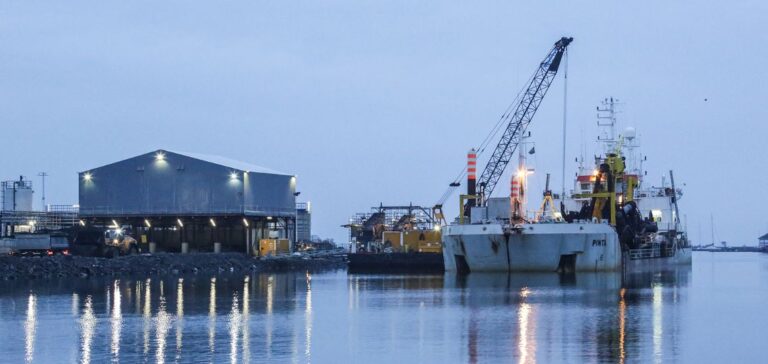RWE and Smålandshamnar AB sign a memorandum of understanding to develop infrastructure at the port of Oskarshamn, to support offshore wind projects in the Baltic Sea. This initiative strengthens the economic development of the Swedish region.
A Strategic Partnership for Offshore Wind Energy
RWE, world leader in offshore wind power, and Smålandshamnar AB, manager of the Swedish port of Oskarshamn, have signed a memorandum of understanding to study the port’s capacity to support logistics, installation, loading and maintenance operations for offshore wind power projects planned for the Baltic Sea. The aim of this collaboration is to map the infrastructure and investment requirements needed to increase the port’s capacity. The rapid development of port capacity will ensure that Sweden maximizes the potential of the offshore wind industry, bringing significant economic growth to the region. In May, RWE also signed a similar agreement with the Port of Karlshamn, reinforcing its commitment to wind power development in Sweden.
Economic Impact and Employment Opportunities
Matilda Machacek, Vice President Nordic Offshore Development at RWE Offshore Wind, emphasizes the importance of having ports close to projects to optimize logistics and operational efficiency. This proximity also fosters growth in neighboring ports and surrounding regions, creating jobs and economic benefits. Rickard Olsen Pella, Project Manager at RWE Offshore Wind, adds that a new offshore wind farm can transform a port into a dynamic hub, catalyzing regional growth and infrastructure. Thanks to its strategic location on the Baltic Sea, the port of Oskarshamn is well placed to meet the future needs of the offshore wind industry.
Strategic position and local expertise
Niclas Strömqvist, CEO of Smålandshamnar, expresses his pride in RWE’s choice of their port. The port of Oskarshamn is already a leader in Sweden for the transport and management of onshore wind farm components. Becoming a hub for offshore wind power will position Oskarshamn as a key player in the green energy transition. The experience of other ports shows that the offshore wind industry is a gas pedal of employment, creating favorable conditions for business and migration, benefiting the region, Sweden and the green energy transition.
RWE: An experienced player in offshore wind power
With over 20 years’ experience, RWE is a world leader in the development, construction and operation of offshore wind projects. RWE currently operates 19 offshore wind farms in Europe, including in Denmark, Germany, Belgium, the UK and Sweden. RWE is also developing Denmark’s largest offshore wind farm, Thor (1.1 gigawatts), and aims to increase its global offshore wind capacity from 3.3 gigawatts to 10 gigawatts by 2030.
Thanks to its technical expertise and global strategy, RWE is well positioned to also become a market leader in floating wind power, exploiting the potential of deep seas.
This collaboration between RWE and the Port of Oskarshamn marks an important step towards consolidating Sweden as the leader in offshore wind power in the Baltic Sea, stimulating local and national economic growth while supporting the energy transition.






















